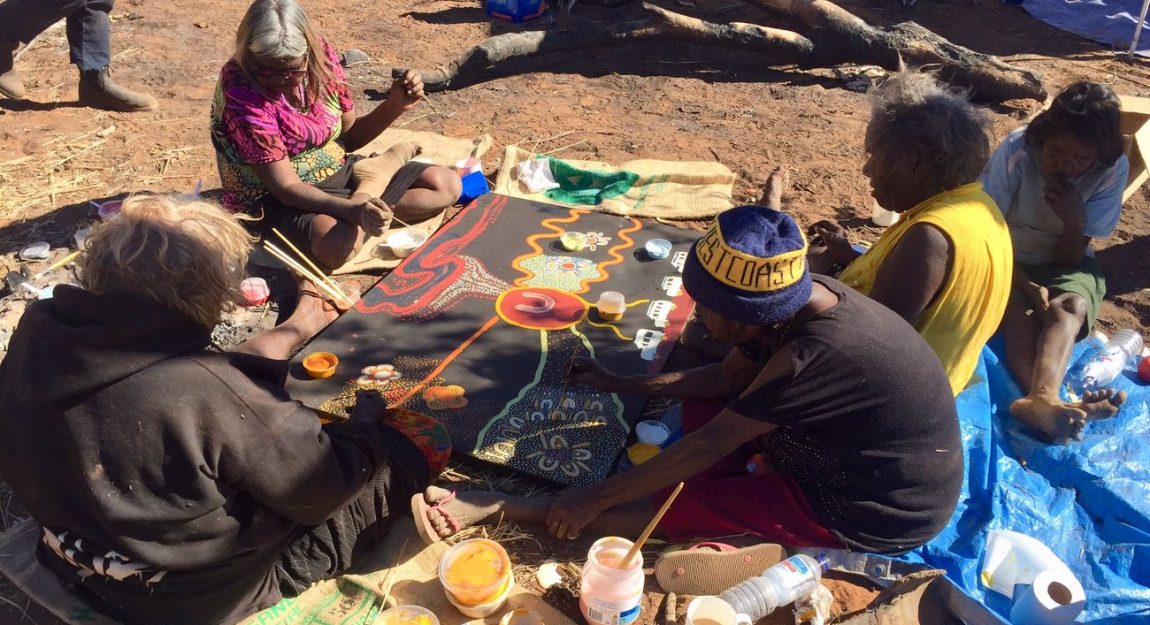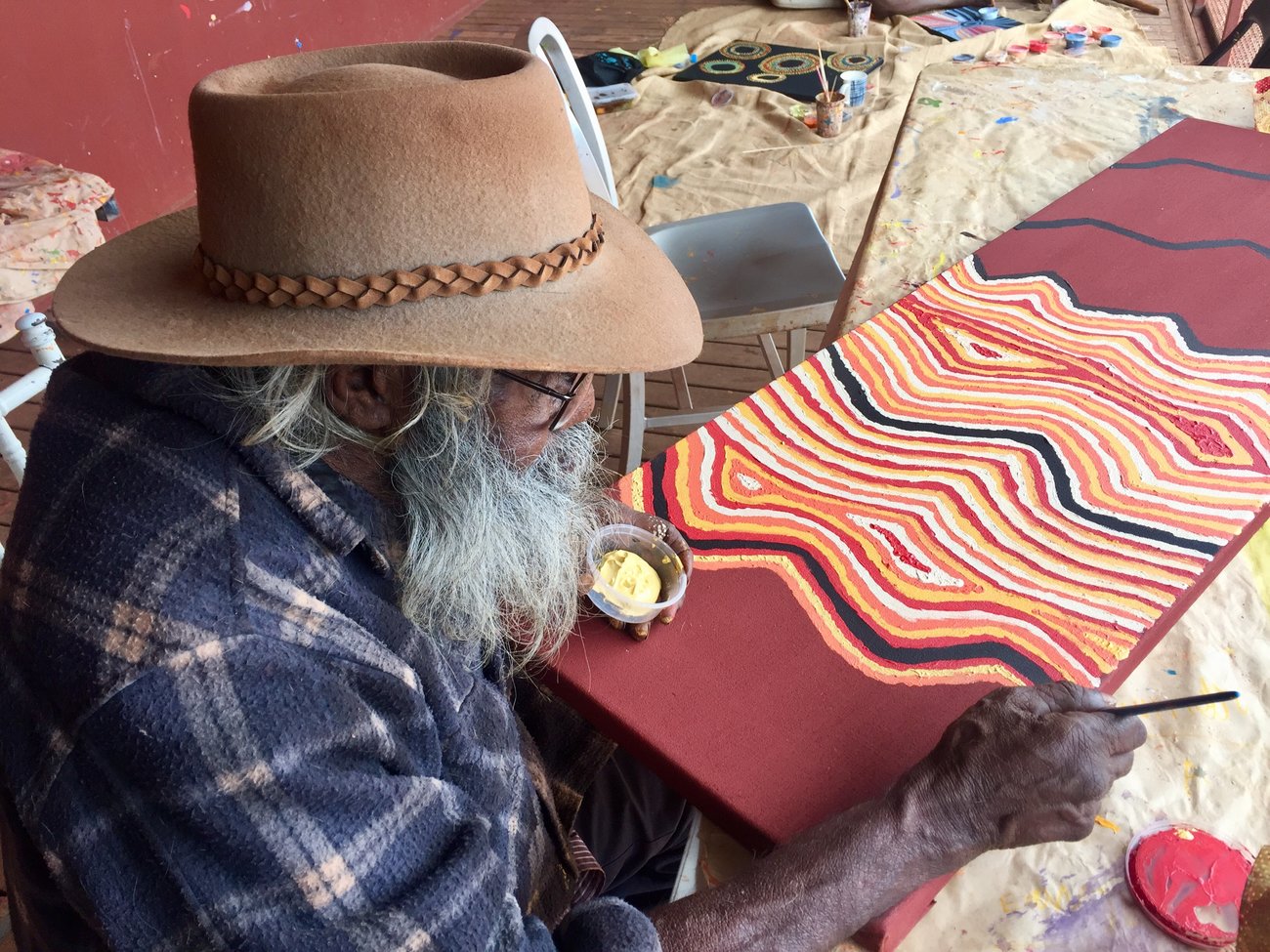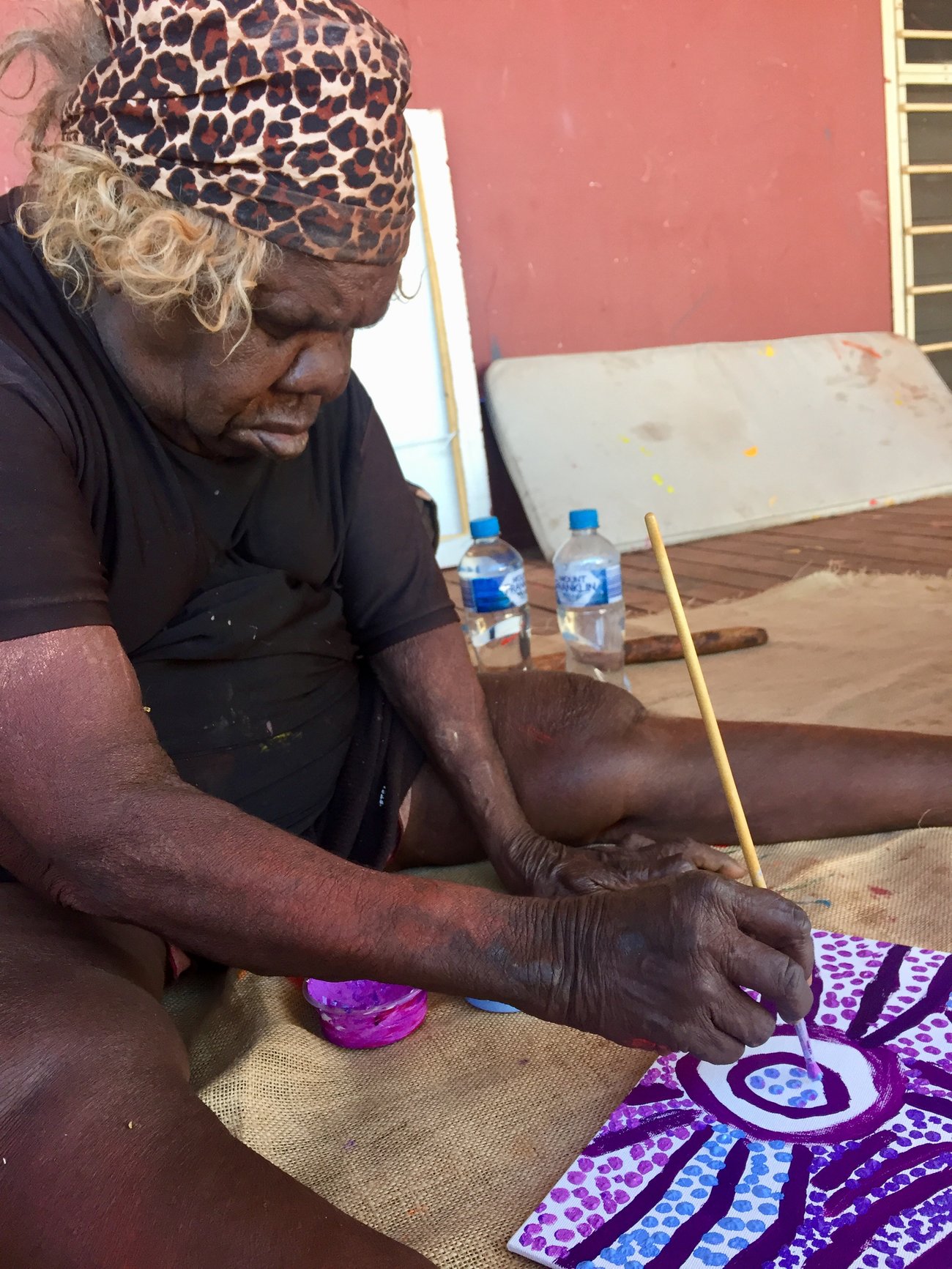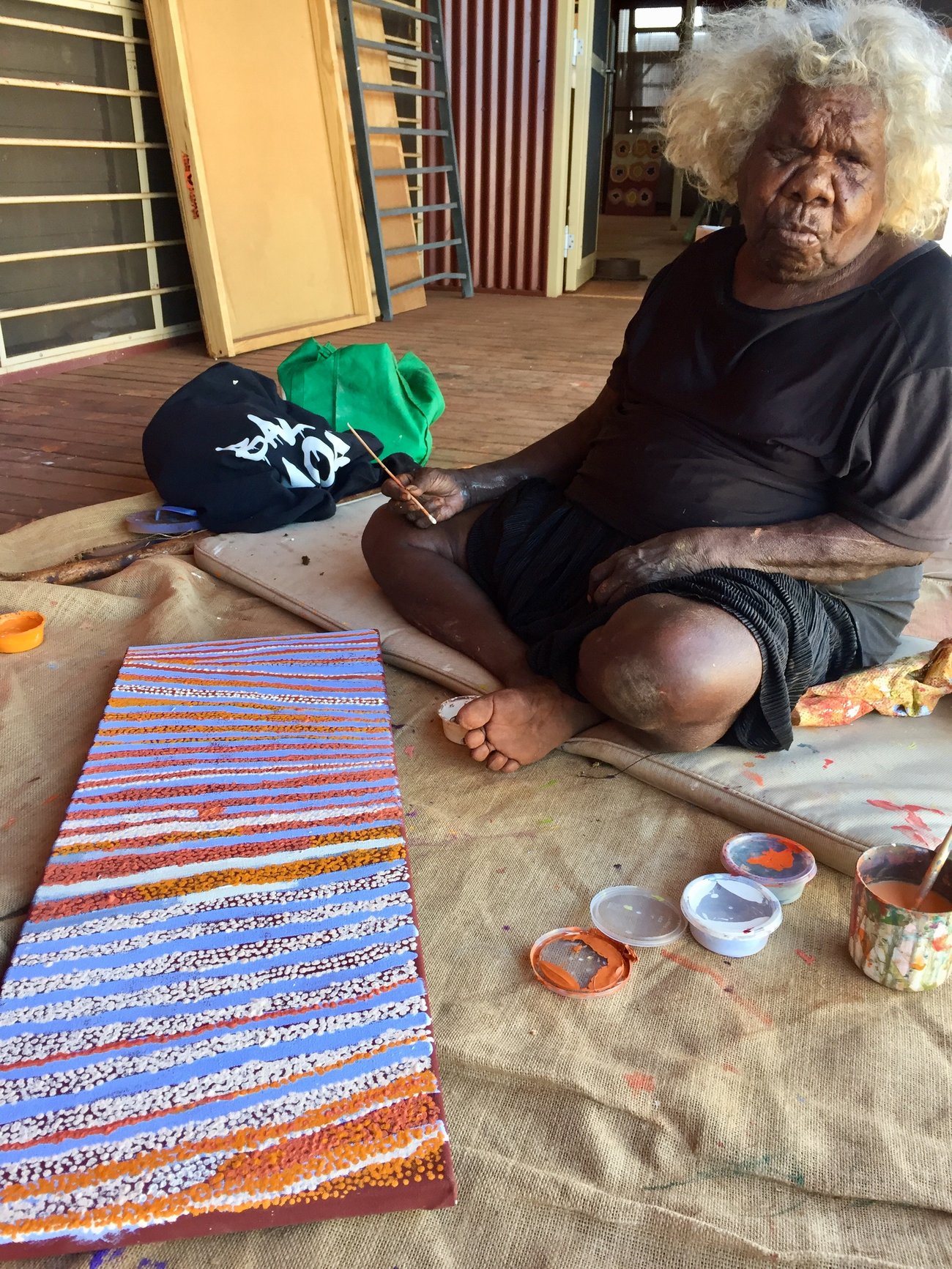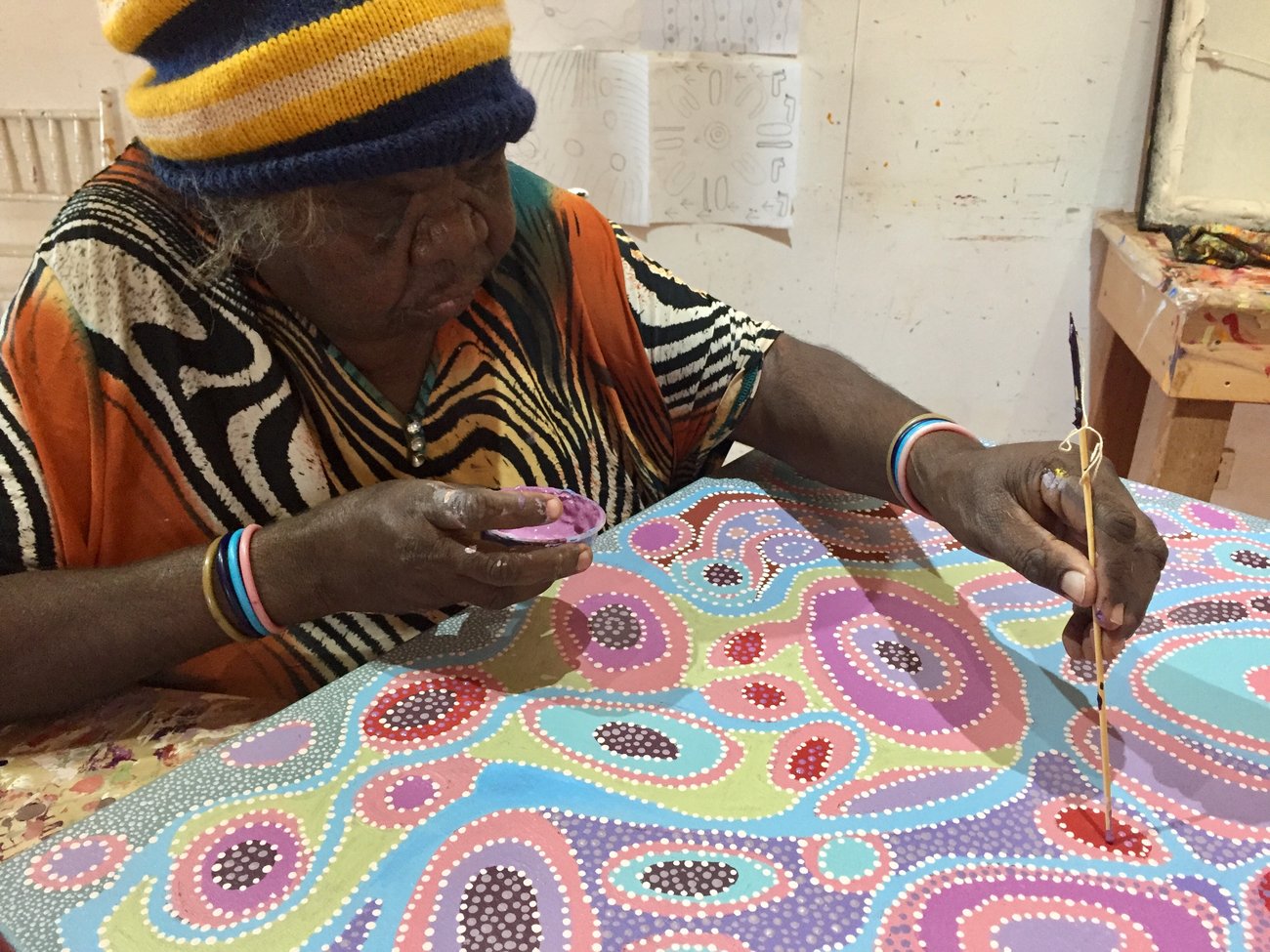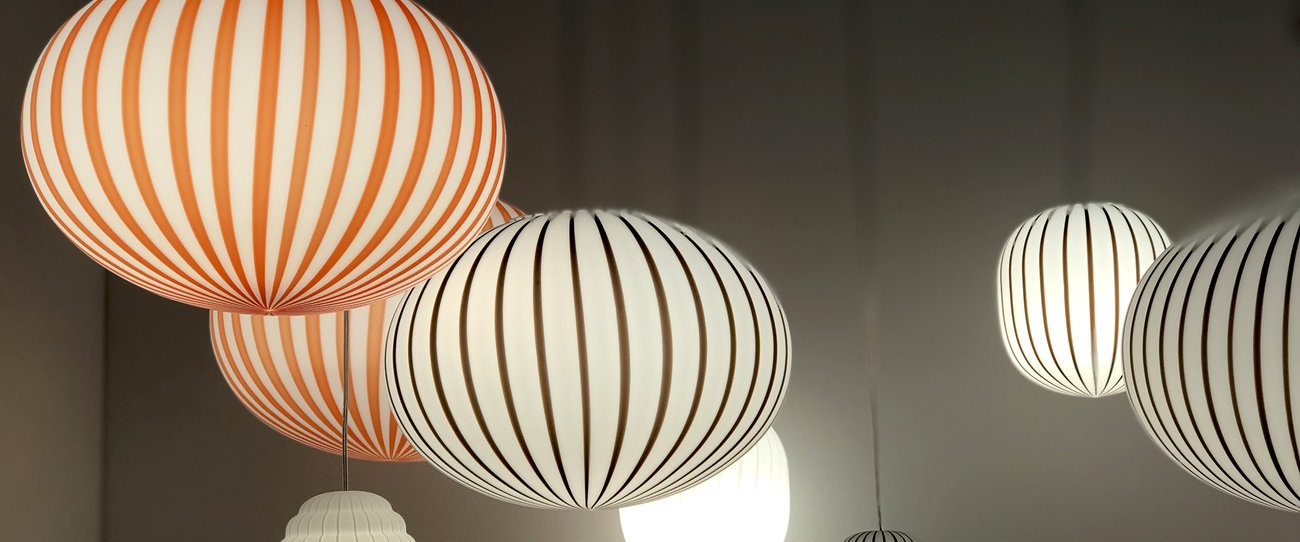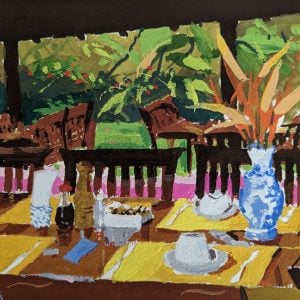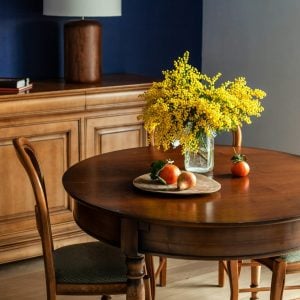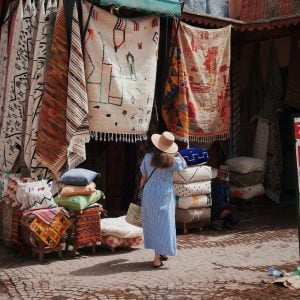We Get to Know Warlayirti Artists
This week is NAIDOC Week! NAIDOC Week is an important occasion on the Australian national calendar (8-15th July 2018) that celebrates the history, culture and achievements of Aboriginal and Torres Strait Islander peoples.
Here at Bluethumb, we’re constantly in awe of the quality and diversity of work produced by our Indigenous art centre partners, and judging by their popularity and sales, so are our collectors. One of our most recent partners is Warlayirti Artists, located in the small Indigenous community of Wirrimanu (Balgo) serving approximately 200 Indigenous artists from the communities of Wirrimanu, Mulan and Kururrrungku (Billiluna). The centre is off to a fantastic start on Bluethumb, and a few of their works have already been snapped up.
We wanted to know more, so we sat down with their studio coordinator Poppy for a good old fashioned Q and A.
Q: Since opening, how has Warlayirti Artists changed or grown?
A: Warlayirti Artists has changed and grown considerably since it’s inception, yet its strength in colour and form continue to be at the core of its identity. Warlayirti established itself through a series of events which culminated into one of the first Aboriginal owned artists cooperatives in Australia, blazing a trail and building a new iconic imagery that has passed through generations of artists. The journey began in 1981 when senior men in Balgo wished to paint banners for the church, and soon after the women joined, forming part of the Adult Education Program. Many of these boards were used in the Art from the Great Sandy Desert exhibition at the Art Gallery of Western Australia in 1986, and it was not long after the success of this exhibition that the Warlayirti Artists Aboriginal Coorporation was established. From that point on Warlayirti continued to go from strength to strength, developing a unique style, using iconic forms, bright palettes and densely applied paint. Warlayirti artists apply paint confidently and directly to the canvas which reflects the rich cultural traditions of their country.
Q: You’ve mentioned in our emails that you’ve been off the radar, what does this mean and how are you addressing it?
A: Warlayirti is currently going through a rebuilding process after a series of events turned the Art Centre away from its original core and aesthetic. Inconsistent direction and distractions within the art centre led to a downturn in productivity and quality, however we believe we are on the upward trajectory and are focussed on returning to what Warlayirti is known and admired for: its iconic, bold imagery. We are focusing on producing quality work and have a number of emerging artists who are reviving the art of Warlayirti, painting stories and country from mothers, fathers and grandparents with the same groundbreaking, uniquely Balgo style.
Q: What makes Warlayirti Artists such an important community resource? What are some of the main services that Warlayirti provides to artists?
A: The art centre is not only an important economic resource for the community, it is also a way for people to keep their culture strong. Many people who live in Balgo are not living in their own country, and the act of painting helps them to visit their traditional lands. Many senior artists were born in the bush and brought into the mission away from their traditional lands early in their lives, so the art centre provides a space for these artists to reconnect with their land, culture and traditions. Elders pass on their tjukurrpa (dreaming) to the younger generation, continuing the connection to culture. The art centre is also used as a refuge and social hub in the community for all people, Aboriginal and non-Aboriginal. The art centre is a welcoming space where anyone is welcome for a cuppa, a yarn and to immerse themselves in art.
Q: What sorts of challenges does Warlayirti experience?
A: We are one of the most remote art centres in the country, and are on the fringe of three great, sparse lands (the Kimberley, the Tanami and Great Sandy Desert), making it a geographically challenging environment. We don’t quite fit into either the desert mob or the Kimberley/Top End mob, which has left us stranded between lands. However, this has ultimately been to Warlayirti’s benefit, as we’ve managed to carve out a place that is wholly and uniquely our own. In addition to this, Balgo was initially formed as a Catholic mission bringing in people from over seven tribal groups from long way north, south, east and west. Therefore, there is no one country, story or aesthetic which represents Balgo. Instead, it is a melting pot of ideas, politics, tensions and histories which are at constant debate and deliberation, leading to a creative exploration that is unique to our region.
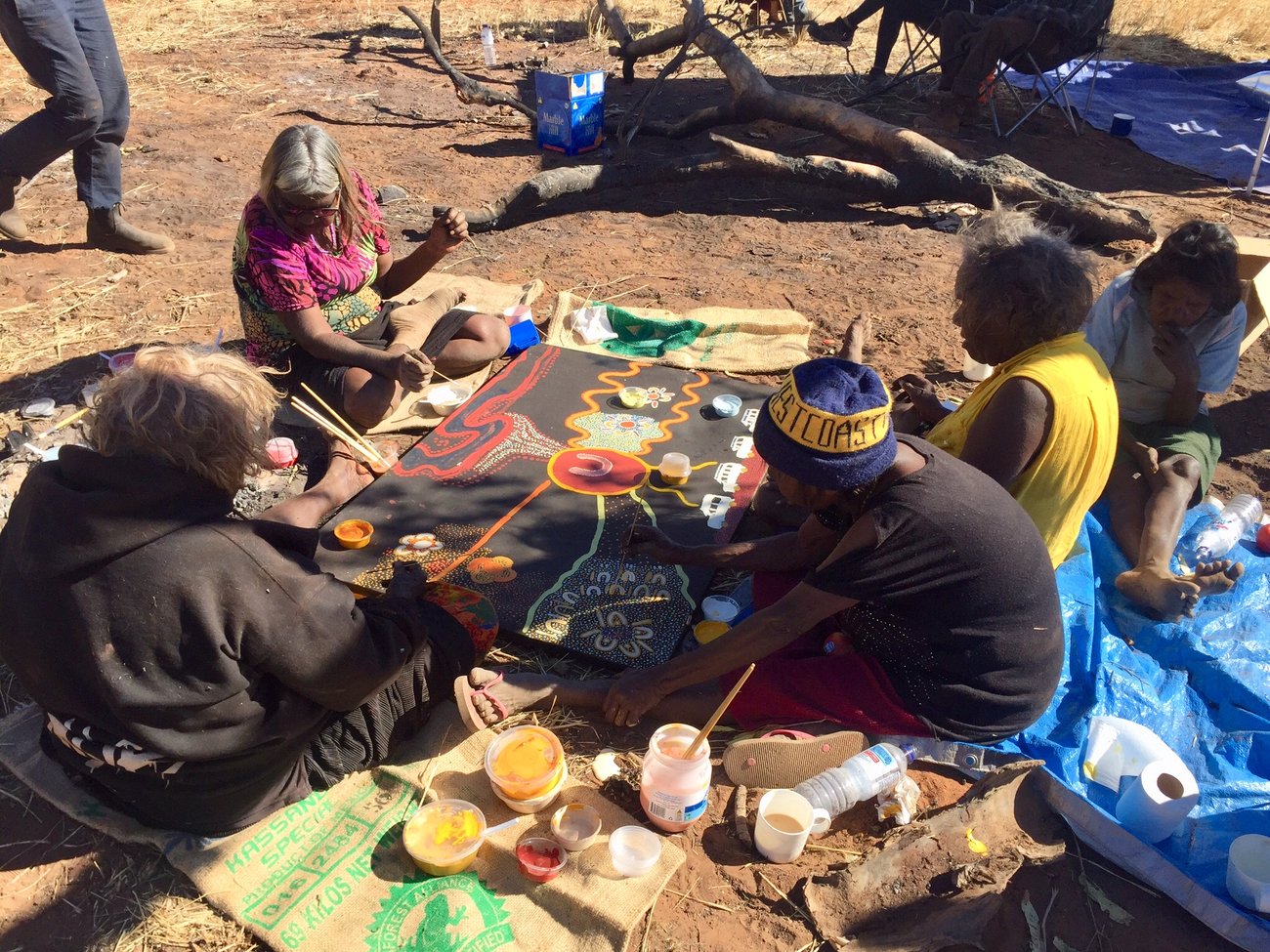
Lucy Loomoo, Jane Gimmie, Helen Nagomara, Tossie Baadjo and Veronica Daniels painting a collaborative artwork on a bush trip out near Old Balgo Mission.
Q: Could you tell us a little bit about the community and region?
A: Balgo is a small community of around 400 people in Western Australia, situated at the edge of the Tanami Desert to the east, the Great Sandy Desert to the south, and the foothills of the Kimberley to the north. Balgo was originally established in 1964 as a Catholic Mission Station and brought together Aboriginal people from different areas and language groups. Warlayirti Artists represents three communities in the Kutjungka region – Kururrungka (Bililuna), Mulan, and Wirrimanu (Balgo) – and seven language groups – Kukatja, Walmatjarri, Ngarti, Jaru, Wangkatjunga, Pintupi and Warlpiri. The art from Warlayirti Artists is charged by this cultural diversity.
Q: Is there anything you’d like to add?
A: We are excited to show off the re-emergence of Warlayirti at this year’s Darwin Aboriginal Art Fair as we have new and emerging talent who are blowing us away at the moment. Desert Mob is also coming up in September and we have some truly spectacular work set aside. Our art centre is open for visitors everyday of the week, so if anyone is driving down the Tanami, please drop in and see what we’ve been up to!
Thanks for sharing some insight into Warlayirti, Poppy!

